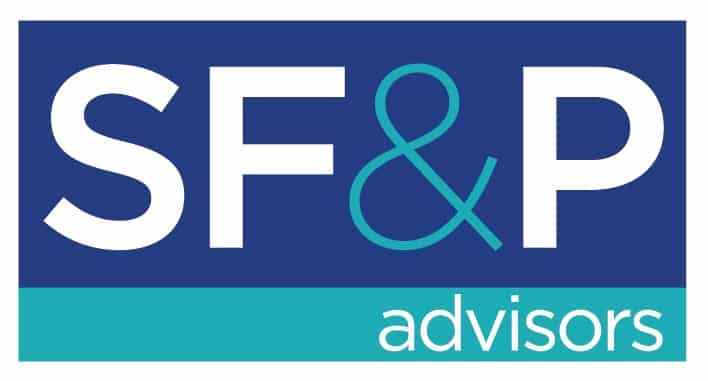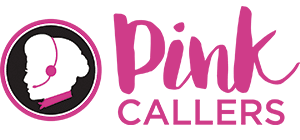A good formula can really make a difference when it comes to improving your copywriting and helping to get out of a creative rut.
The formula you chose will most often depend on the application for which you are using it. One very popular formula is AIDA.
This formula has been referred to as many things, and for some, it might even seem elementary. AIDA, like the acronym implies, breaks your copy into four groups. Those four sections are attention, interest, desire, and action.
FAB formula is broken into three sections and is a great formula to follow for sales copy or product copy. The sections follow this rule; features, advantages, and benefits.
No matter your skill, experience, or time spent as a copywriter, all content can and should be broken into these four or three sections. Observing them and making sure you use each element is crucial to creating compelling and persuasive copy. Not only will these formulas help you become a better copywriter, but they will also help you overcome writing blocks and dig deeper into better content.
We’ll first cover the AIDA formula in this post and then move into the FAB formula. Jump ahead if you’re looking for FAB, but remember, it’s always good to brush up on some AIDA skills.
Let’s dive in!
Better Understanding AIDA
The AIDA formula originated in 1898. It was created by Elias Saint Elmo Lewis, who has become a legendary figure in advertising and was inducted into the advertising hall of fame.
The formula has been used in mailing, catalogs, and other print advertising, as well as all forms of digital marketing. When originating, it was said that all advertising has to follow this formula.
Since then, other variations have developed, but AIDA is still the “old faithful” formula for copywriting.
Here’s how it works!

Getting Your Readers Attention
Attention is the first step in this formula. It’s been a basic concept, but the variety of ways that you can grab your reader’s attention are almost endless. A sure-fire way to make sure you’re getting your audiences’ attention is to know your audience. Understand who you’re selling to and why they’d want what you have. Build some brand awareness. Of course, I’d advise not to give your sales pitch right away, but don’t be afraid to be authentic and honest.
Do your research, understand your audience, and give them exactly what they’re looking for. You’ll never lose their attention.
One of the ways we do this at Hook Agency is developing customer personas before writing or marketing content. We make sure we understand why they would want what we have, how it can help them, and what problems they have that we could address. Using this model has allowed us to develop the psychology behind our copywriting even more.
Holding Your Readers Interest
The only logical thing to think after attracting someone’s attention is holding their interest. You have to keep their attention by keeping them interested in what you’re writing.
The very best way to do this is first to build your understanding of the audience that you’re writing for. If you understand your audience, then you’ll understand what they’re looking for and, in turn, provide them value.
Storytelling is a great way to do this and definitely something that will help your readers buy into what you have to say. Give them a reason to stay, and you’ll be able to keep them. Don’t think that people will read your post just because you publish it. There are approximately 4.4 million blog posts released every day. Find a way to make your content more interesting than the next.
Understanding Your Readers Desire
Desire is where you get into the meat of your content. It’s’s where you show them how your product can meet their needs and desires. When you have their attention and interest, you’ll be able to speak to their needs.
This is where you prep your audience for the sale. And yes, writing within this formula will continually lead you to sales.
Your goal is that by the end of reading about what your product will deliver and do for them, your reader will be ready to buy. They shouldn’t be second-guessing what they’re getting. If you don’t make it crystal clear for your potential customers: what they’ll receive and how to receive it, then you’re going to be missing sales left and right.
Asking Your Reader to Take Action
Don’t be afraid to ask your reader to take action. Ultimately that’s why you’re marketing this product. Whether it’s an email list subscription, booking a call, purchasing your product/service, you have to be confident in what you ask.
When you appeal to the interests and desires of the right customer, then asking them to take action is the last step in delivering the perfect result for them.
The most direct call to action or CTA should come at the end of your content, but it’s not bad to place some lighter CTA’s’s throughout. Some readers might be ready to take action sooner and won’t need to make their way all the way through your content. Other readers are going to read it in its entirety and then make their decision.
The key is to ask is an assertive and authoritative way that shows the reader you value their decision. Own the asking (CTA), and you’ll go far!

Putting AIDA Formula Into Practice
While this formula does fit easily into many different scenarios, it isn’t always perfectly simple to put it into practice. It might take time and practice to get it right for the particular type of writing that you’re doing. Every product is different in some way, and everyone comes from a different perspective when writing and creating content.
The best way that I’ve found to use this formula is in a place of strategy. When you’re preparing for something you need to write, use the AIDA formula to outline the article or strategy. Doing this will help you cover all your bases. It keeps you from leaving anything out and helps you make sure you have a good foundation for your writing.
Better Understanding FAB Formula
Now that we have a good understanding of AIDA let’s look into another great sales copy formula. FAB has been around for a while and is, in many ways, even more, angled towards sales.
The goal of this formula is to quickly and easily explain your product or service in a short amount of words. Usually only using around 120 words. So you can see how this would work out to be the perfect sales pitch. Short, sweet, and sure to sell tons and tons of Ice Cream. (or whatever else you might be offering 😉)
Features: Define What You’re Offering
The first step in this formula features. Quite simply, this is the product/service that you’re offering and what value it can add to your customer. Be careful here not to get ahead of yourself. All you want to do is describe the features—nothing more and nothing less.
This is a straightforward thing to do in most cases. Don’t worry about being too creative, instead just be honest and state what you’re offering, what it does, and how it can help your customer.
Advantages: Why Should I Chose Your Product
This next part is a little trickier than the first. This is where you give the customer the reason for why they should choose your product/service instead of your competitor. It’s crucial here that you get creative. People today are seeing between 4k to 10k ads and other marketing-related materials throughout each day. If you want consumers to see your product and engage with it, then you’ll have to find a way to make it different from what everyone else is doing.
Get creative and add some story to it. Try to identify with who your customer is and what they experience on a day-to-day basis. Then show them how choosing your product can make their lives better. This brings us to benefits.
Benefits: What Will It Mean For Me
It all gets tied together with benefits. What does the product solve for them, or what will it help them become. For example, an all-natural protein shake will help make the consumer feel stronger and ready for whatever life throws at them.
It’s’s, not an exact science. But instead, you tell the story of what the product will allow the customer to experience. The end goal is that the customer would be able to see the benefit for their own lives and then purchase what you’re offering so that they can accomplish it.

Putting It Into Practice
As I mentioned, earlier this formula is best used in short-form copy. But, it can also help you see the big picture when beefing up your CTA’s’s and pitches within longer-form content. Consider using it to outline the big things you need to hit in a CTA or intro to what you’re writing about or pitching.
Using Both AIDA and FAB Together
There are several ways that these formulas can be used in conjunction. But the best way to do it is to outline different sections within your AIDA formula with the FAB formula. For example, when you come to the interest section in AIDA, use the FAB formula to help build it out. Touch on the features, advantages, and benefits. Maybe it doesn’t work perfectly to use all three sections, in that case, save benefits for the desires section or your CTA.
When it comes down to it, the most important part about copywriting is being creative. These formulas don’t have to be used every time you write, and they don’t have to be the only way that you create copy. They should serve as a source of inspiration.
If you’ve enjoyed this piece of content, feel free to drop a comment or give it a share. You might also like some of the other copywriting content we share on our blog.















